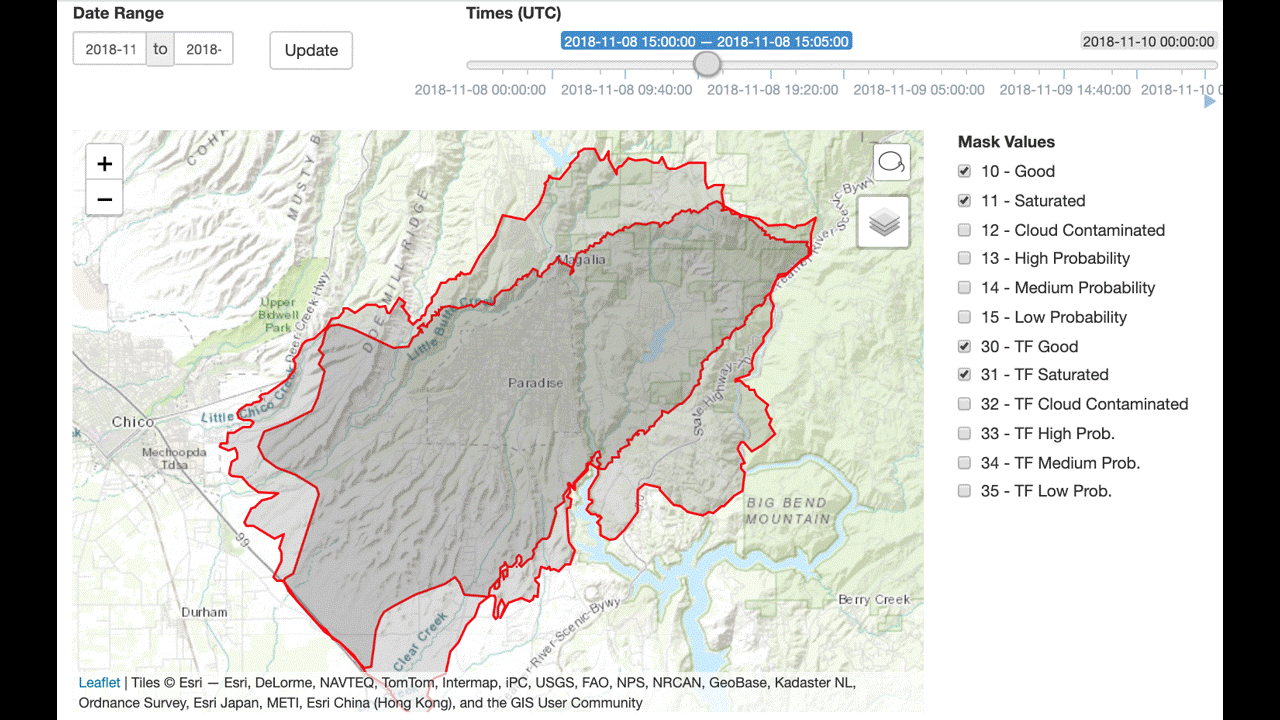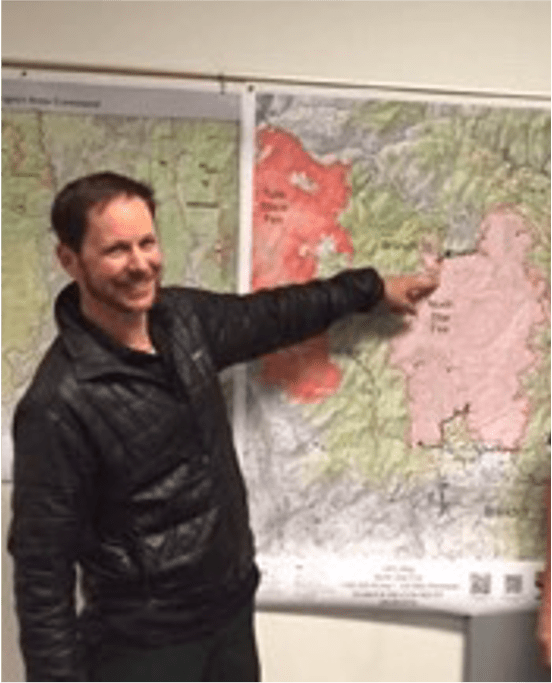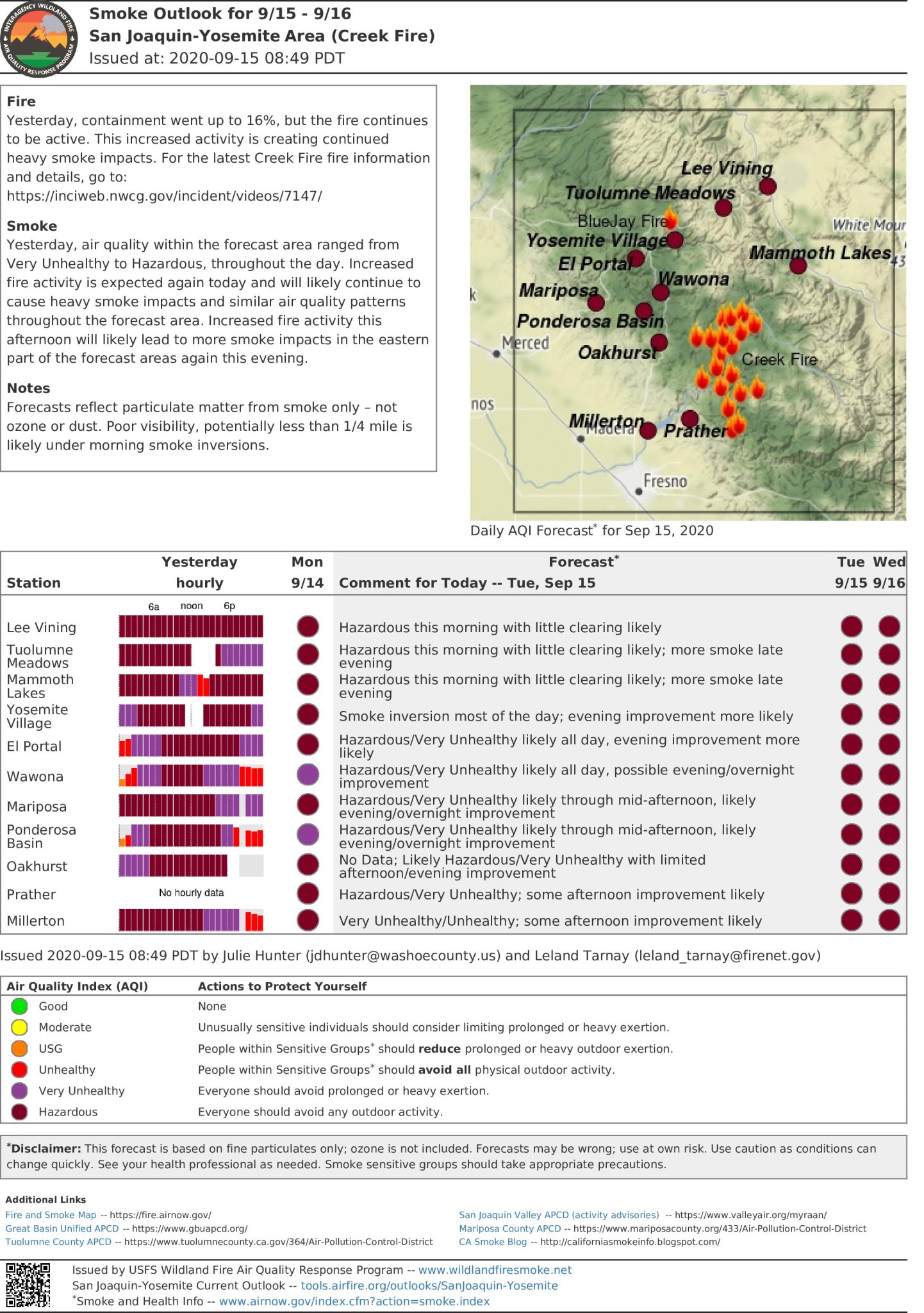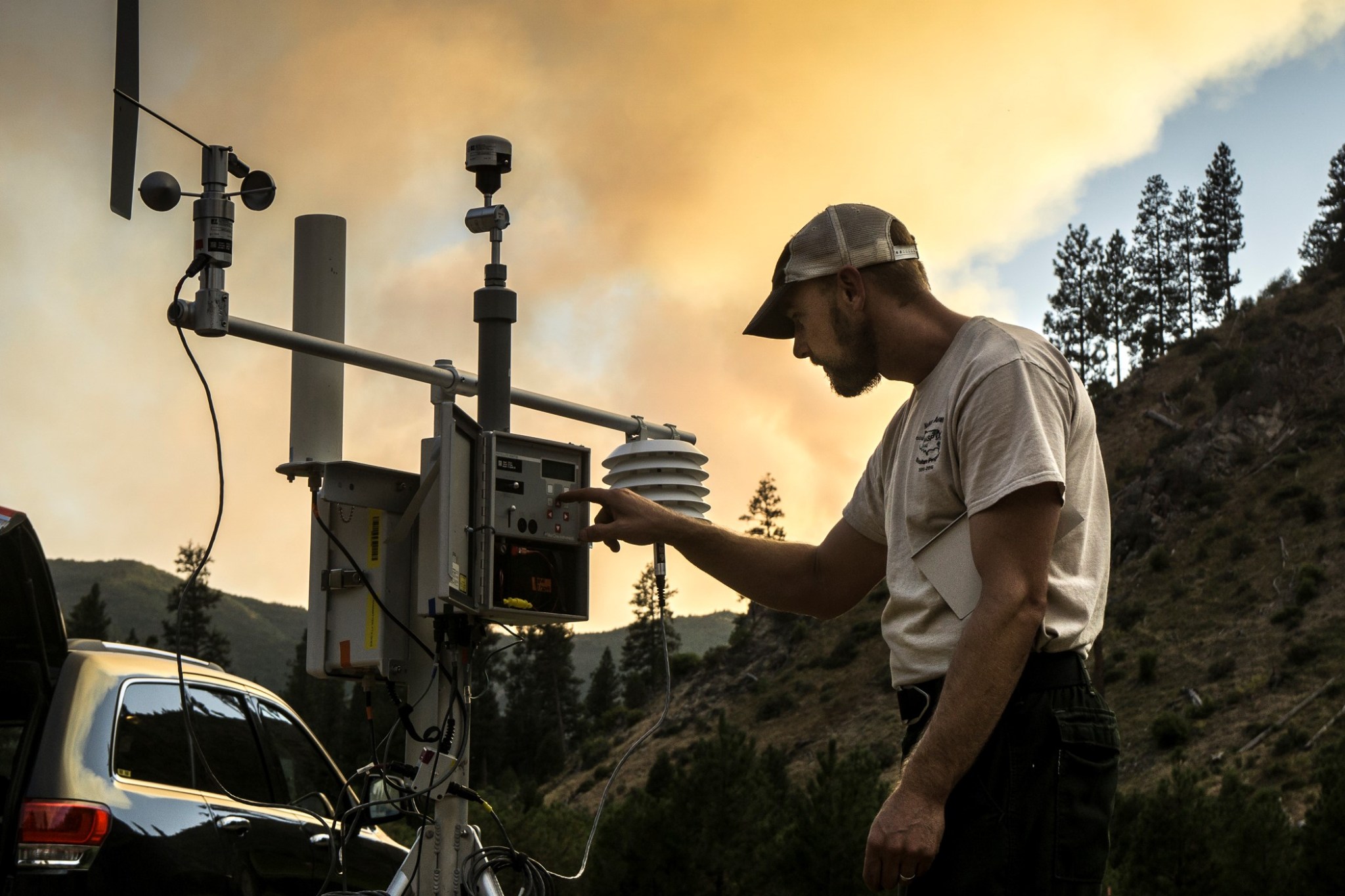The U.S. Forest Service now has a powerful way to view near-real time fire detection from NASA satellite data that they can include in their hourly air quality forecasts. A NASA-supported project created a new, experimental tool that incorporates near real-time fire detection data from satellites into hourly estimates of emissions to better track fire smoke as it billows into surrounding communities. Used for the first time in summer 2020, when historically large fires in California blanketed vast areas of the state in smoke for days, the technique is now being refined as a way to monitor smoke. As exceptional drought grips the western United States this summer, another active fire season is already underway.
Susan O’Neill and her team developed the data tool as part of NASA’s 2017 California Wildfires Tiger Team, an initiative within the Health and Air Quality Applied Sciences Team (HAQAST) of NASA’s Earth Applied Sciences Program. O’Neill is the lead investigator and said that typically, computer models use fire size, type of vegetation burned, and current weather conditions to estimate how, when, and where the risk of smoke was greatest.
“When I was first shown this tool my head kind of exploded. It’s amazing,” said Leland Tarnay, an ecologist with the U.S. Forest Service’s Remote Sensing Lab. Tarnay used the data during the 2020 California Creek Fire, and said that having five-minute updates on a fire’s position was a vast improvement over some earlier methods that relied on the previous day’s fire activity. As smoke from fires has dangerous effects on public health and air quality, understanding its reach can help inform local decisions.
“When the smoke impacts from the Creek Fire were at their peak, a single day’s growth was managing to produce 5,000 or more tons of (PM2.5) pollution,” Tarnay continued. “Park officials came to us and asked, ‘Will these smoke impacts continue?’ We’d almost never seen those levels – we gave them our forecast that it would likely get to hazardous levels again and stay there for days.”
Tarnay is one of the Air Resource Advisors (ARA) deployed by the Interagency Wildland Fire Air Quality Response Program. They are technical specialists available to incident management teams and agency administrators. ARAs are trained for deployment to incidents to analyze and communicate impacts like these to fire response teams, air quality regulators and the public.
Tarnay said that it was previously a huge lift for ARAs to assess emissions for multiple simultaneous individual fires. “That’s where this tool is such an opportunity to really streamline those efforts,” he said.

“Models would often predict fires to be most active between 2-5 p.m., the hottest part of the day,” O’Neill said. “But not every fire follows that model – sometimes, they can have a big overnight run that doesn’t match what a model might typically predict.” Now, using data from the National Oceanic and Atmospheric Administration (NOAA) Geostationary Operational Environmental Satellite-16 (GOES-16), researchers can see those unexpected changes, and potentially incorporate them into models and share that information with local health and fire response agencies.
Sean Raffuse, a researcher at University of California-Davis’s Air Quality Research Center, is on O’Neill’s team. Raffuse develops fire and smoke models with research and satellite data and built the website to more easily visualize this data for human eyes. The website tracks fires’ movement every five minutes and the amount of emissions produced. Raffuse saw his model in action one sunny November day in Davis, California, as the 2018 Camp Fire exploded nearby.
“We had a meeting in another building, so we enjoyed the weather on the short walk outside,” Raffuse said. “When we left the building an hour later to go back, the sky had completely changed – the air was thick with smoke. I had just built a simple viewer to visualize the information we had, so I rushed back to my office to see the data coming in. As I scrolled through the time series, I could hardly believe it – a nearby fire had exploded overnight. Now the smoke was reaching us, and it had completely taken over the area in the time it took us to have a meeting.”
Raffuse saw the Camp Fire, in near real-time, rapidly expand to take over the city of Paradise, California, in 2018. “We were quite a ways downwind, but still the smoke so quickly overcame the area. It interesting and a little scary to see how fast the smoke had moved,” said Raffuse.
Motivated by their personal experiences watching the Camp Fire unfold, O’Neill’s team took a deeper dive into the data and forecast the smoke as the fire progressed. “It was an important test to see some success using this for operational forecasts, and showed us places we could improve,” O’Neill said.
One such improvement is the addition of data from GOES-16’s younger brother, the GOES-17 satellite, which they are working to incorporate into the project. “This doubles our eyes in the sky,” Raffuse said, “giving us more data over the continental U.S.”
The team is using a range of NASA Earth observations to assess the presence of fires from multiple perspectives, including the Moderate Resolution Imaging Spectroradiometer (MODIS) sensor onboard NASA’s Terra and Aqua satellites. They also used data from the Visible Infrared Imaging Radiometer Suite (VIIRS) onboard the Suomi National Polar-orbiting Partnership (NPP) mission, a partnership between NASA and NOAA.
The results of these forecasts and pollution estimates are included in a website tailored for incident management teams and scientists. Furthermore, the public can view the real-time satellite information from several webpages, including NOAA’s AerosolWatch, NASA’s Worldview, and NASA’s Fire Information for Resource Management System (FIRMS). Taken together, all of these Earth observation resources can allow the assessment of fires from multiple independent perspectives, capturing a more complete and refined understanding of active events to better inform decisions.
“This project is promising, and we’re looking into even more ways to assess smoke output from a fire,” Raffuse said. The new estimates are already being applied in several ongoing studies on public health, some of which are also funded by HAQAST. The team is continuing to make their smoke predictions more robust and easier to use, so they can be available as a standard tool in response agencies’ resources – all to help protect public health and keep first responders informed of these environmental risks.






























